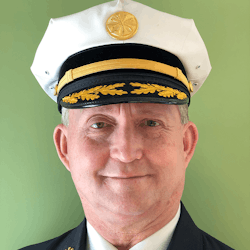Triage is a medical term that means to separate or sort. Developed by Dominique Jean Larrey in the early 1800s, triage has been a standard in EMS since the latter’s inception.
Through all of the advances in emergency medicine, why has this stood the test of time? Probably the biggest reason: lack of evidence that it works! Does sorting casualties into classes of priorities for treatment and transport aid survivability?
First responders learn how to manage mass-causality incidents (MCI) but lack “knowledge” by not seeing the bigger picture. It’s in this notion that I believe that triage systems fail.
Color un-coded
No matter what MCI system that’s used, responders learn the three T’s: triage, treatment and transportation. The “untaught concerns” are rooted in the misunderstanding of all of these, particularly triage. This can cause untoward consequences.
Providers learn that once a scene is safe and command is established, the next order of business is triage. There are definite needs and purposes for triage, but the sorting by the primary color groups—red, yellow, green and black—doesn’t work as well as most responders believe.
Triage is very timely and resource-intensive. Depending on your system and geographic location, the term “resource” has different meanings. EMS services that are in densely populated areas have more resources than EMS services that are in a location that’s spread out. In a less dense system, EMS vehicles have increased arrival and transport times. More-populated areas have more and closer hospitals, increasing the number of patients being handled via shorter transportation times. Most providers lack the aptitude to consider turnaround time for getting vehicles back to an MCI. Traffic and weather also play a factor.
Another issue that’s lacking: How do you handle daily 9-1-1 emergencies while you mitigate the MCI? Conversely, if you run out of ambulances frequently or have long response times, how do you properly manage an MCI?
A school bus accident is a controlled MCI, occurring in a smaller area and involving a limited number of patients. An uncontrolled MCI that’s spread over a larger area will make it more challenging to gain access or regress, mitigating differently. Most responders don’t practice for these scenarios. The same goes concerning the issue of police and fire crews blocking ambulance access or regress points.
The elements
Once triage starts, treatment and transportation are established. Let’s work through this process.
You have an incident in which significant weather is a factor (extreme temperatures or rain or snow). This drastically changes victims’ outcomes. While you triage all of the casualties, they remain where you found them, jeopardizing their safety and creating medical concerns. Should you move them to a secured, climate-controlled treatment area? If you do, you’re relocating the disaster, which is dangerous and decreases victim survivability. Also, moving victims twice requires as much as twice the amount of time and workforce.
If you triage victims quickly and move them right into transportation, you will control the scene more efficiently. Treatment also can be transportation. You only treat the less injured, because they have time before needing transport.
By the way, I like the idea of not marking anyone as a “black” (deceased) causality. If suddenly you have a large pool of vehicles for transport, this will change the way that you triage. Remember, the purpose of triage is to sort; maybe you don’t need to categorize if you have resources. I have seen numerous trauma patients who had horrific injuries survive and lead healthy lives. Give everyone a chance, and you might be surprised by the outcome. That said, yes, a decapitation still is DOA.
The age of electronics has eased the process of putting multiple patients into a system. However, I learned from experience that during wet weather these don’t work. Rain prevents scanning electronic bar codes into your system.
Most paper triage systems lack, here, too. MCIs that occur at night or in dark areas render triage tags unreadable.
Sorting it out
The crucial triage issue is lack of practice and experience. Most who practice MCIs don’t triage, causing system failure. Triage must be a comfortable and straightforward skill. Responders must train on transportation issues and provide better survivability and accountability systems.
About the Author

Richard Bossert
Richard Bossert is a retired operations chief for the Philadelphia Fire Department. He started in the fire/rescue services in 1970, volunteering for the Warminster, PA, Fire Department. He worked for three career fire departments: Chester, Bensalem and Philadelphia. Bossert became a certified EMT in 1973, then paramedic in 1980. He received a bachelor’s degree in pre-med from Pennsylvania State University in 1977 and a master’s degree in public safety administration from St. Joseph’s University in 2003.
